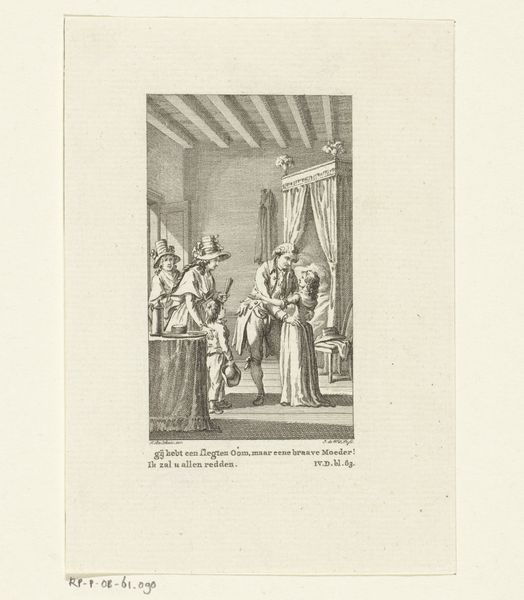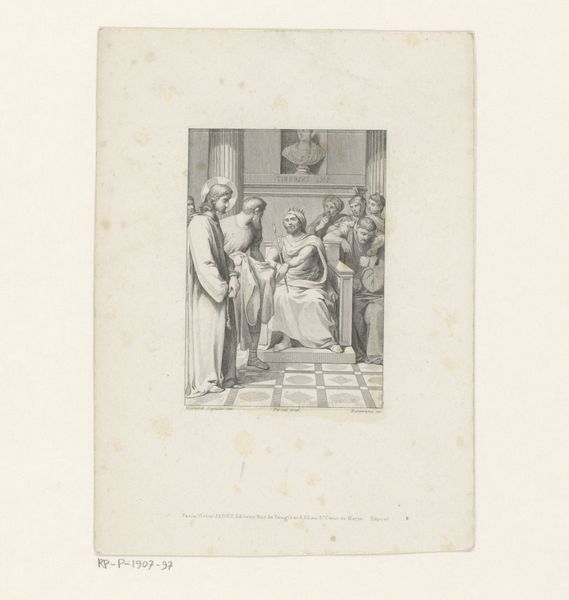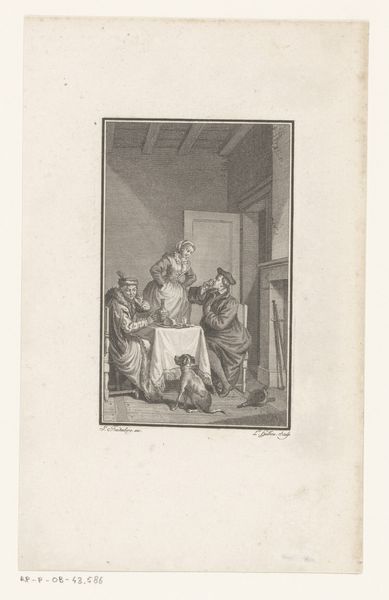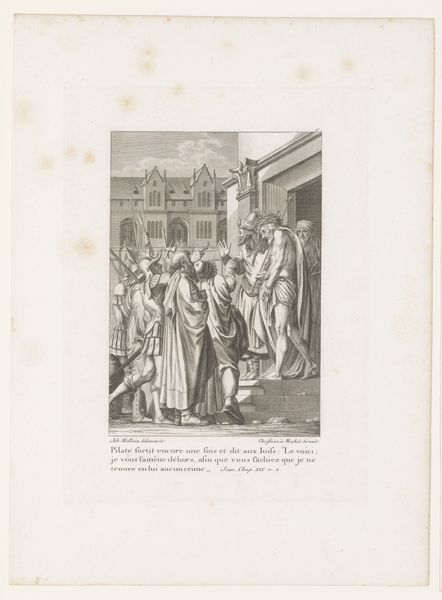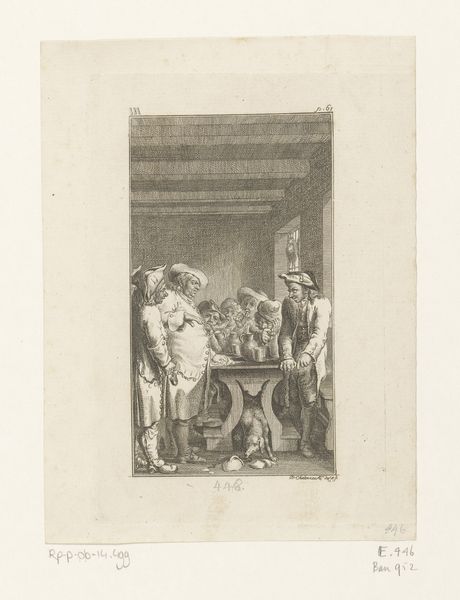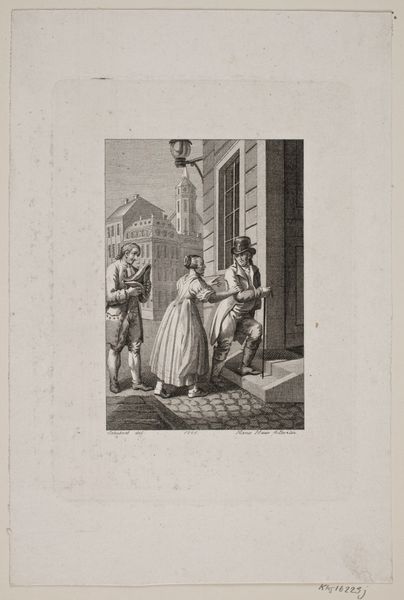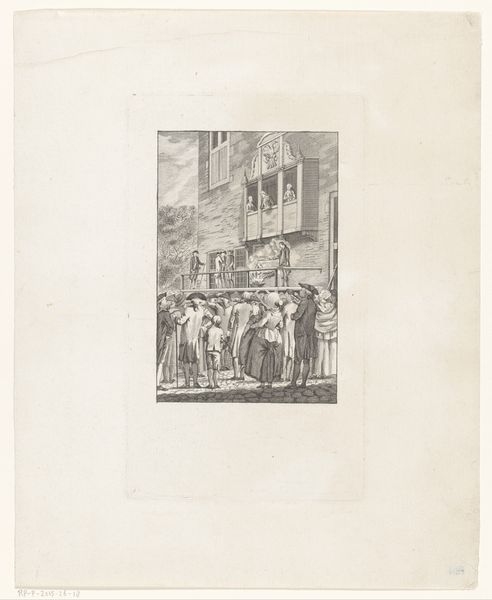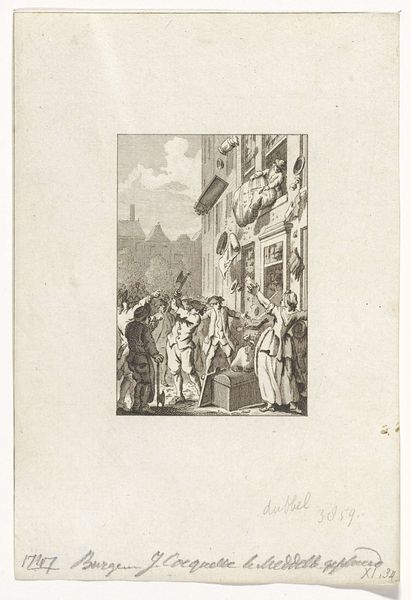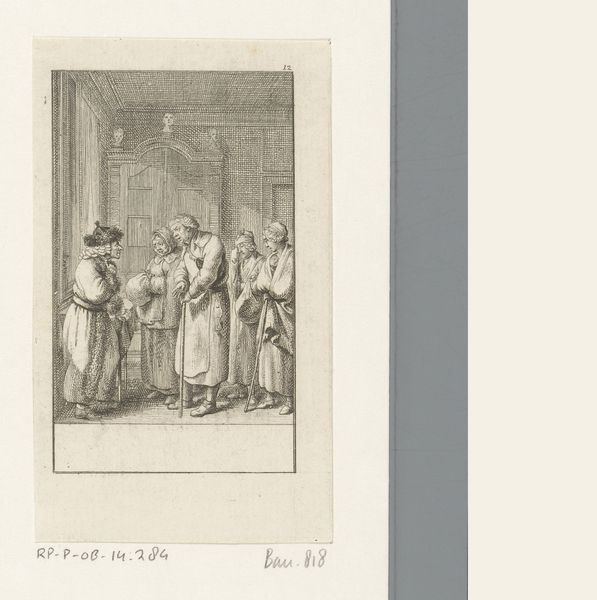
Dimensions: height 115 mm, width 79 mm
Copyright: Rijks Museum: Open Domain
Curator: This is Daniel Nikolaus Chodowiecki's 1783 engraving, "Yoricks wagen wordt omringd door bedelaars," currently held in the Rijksmuseum. Editor: My initial impression? Claustrophobia. A tight knot of figures vying for space. It's intensely… busy, a visual scramble. Curator: Precisely. Consider Chodowiecki’s choice of the engraving medium. The etched lines, the contrast... it’s reproducible. This image wasn't destined for a palace wall. It was made to circulate, a commentary available to a broader public. Editor: Which speaks volumes, doesn’t it? Not just some decorative scene but a conversation starter for, presumably, uncomfortable truths about wealth and poverty right there in the streets of 18th-century Europe. The beggar’s expressions seem almost… accusatory. Curator: Note the specific detailing in clothing. Yorick, ostensibly a figure of some status, contrasts starkly with the ragged attire of those surrounding him. What raw materials make their clothes? How does their condition represent access—or lack thereof—to textiles and their production? These choices reflect societal structures. Editor: Material concerns laid bare! And the artist isn't hiding the socio-economic discomfort. What do you think, metaphorically, of his rendering the "Wagen", this wheeled mode of transport for someone clearly able to move without impediment surrounded by those in rags and on crutches... Curator: This is a city scene full of stark class divides. What would have it taken, in terms of human energy and capital, to maintain these carriages in comparison with sustaining the population, many of whom struggle for basic means. Editor: It's less about individual portraiture and more about systems and how individuals navigate them? No escaping that social matrix! I am left ruminating on the legacy of class in art and whether true, honest artistic depictions will endure for our contemporary society... Curator: A useful perspective. Analyzing an image like this pushes us beyond aesthetics into considerations of labour, resources, and social narratives embedded within everyday scenes. It becomes less about artistic mastery alone and more about revealing systems of power and their material impact.
Comments
No comments
Be the first to comment and join the conversation on the ultimate creative platform.
